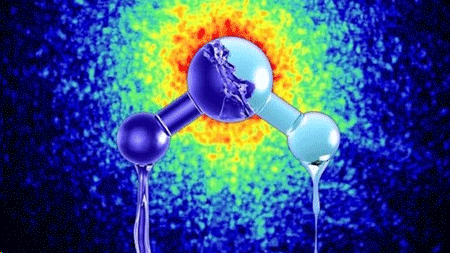|
NOVIDADES
Water is way weirder than you might think. We know it can exist as a solid, liquid and gas, but put it under extreme pressure and it converts into a freaky fourth state called tunneling, and it may even freeze at temperatures it would normally boil. But now, researchers have found that water actually has two different liquid forms, and its weirdness may come from the relationship between those forms. The finding started with the understanding that ice exists in different forms. When we freeze water at home, its molecules line up in a crystalline structure that's fairly ordered and symmetrical. But out in space, ice tends to take on a less structured, amorphous form, and even then, there are two different types with low and high densities. It's long been thought that this could apply to its liquid form, but it's never been directly observed – until now.  Researchers at Stockholm University have discovered that water exists in two liquid forms, one more viscous than the other. Credit: Mattias Karlén
"I have studied amorphous ices for a long time with the goal to determine whether they can be considered a glassy state representing a frozen liquid," says Katrin Amann-Winkel, co-author of the study. "It is a dream come true to follow in such detail how a glassy state of water transforms into a viscous liquid which almost immediately transforms to a different, even more viscous, liquid of much lower density." The conclusion the researchers reached is that water gets its weirdness mostly from the interplay between these different liquid forms. Understanding them could help paint a wider picture of how water is affected by changes in temperature, pressure, and the addition of other chemicals. "The new results give very strong support to a picture where water at room temperature can't decide in which of the two forms it should be, high or low density, which results in local fluctuations between the two," says Lars G.M. Pettersson, co-author of the study. "In a nutshell: Water is not a complicated liquid, but two simple liquids with a complicated relationship." The research was published in the journal Proceedings of the National Academy of Science. Stockholm University. Posted: Jun 28, 2017. |
|||||||||||||||||||||||||